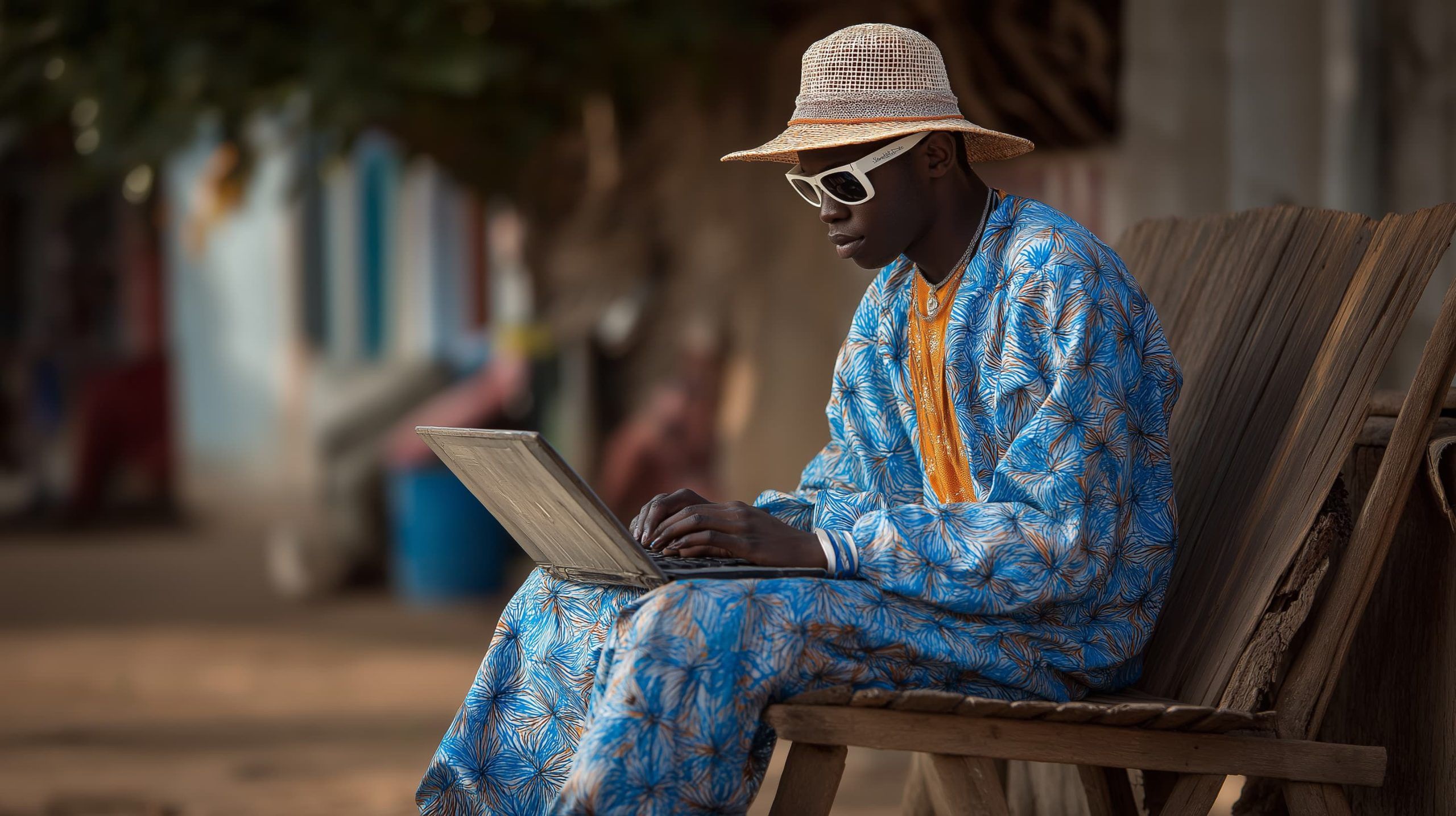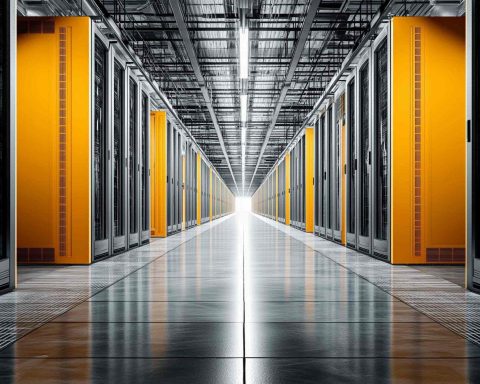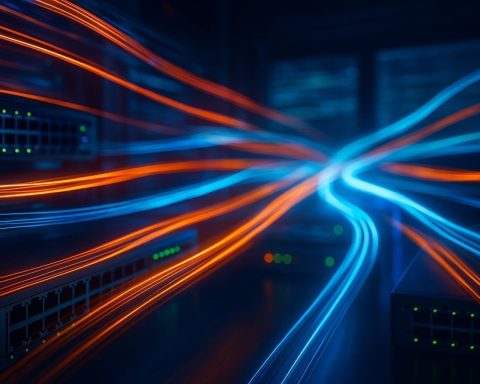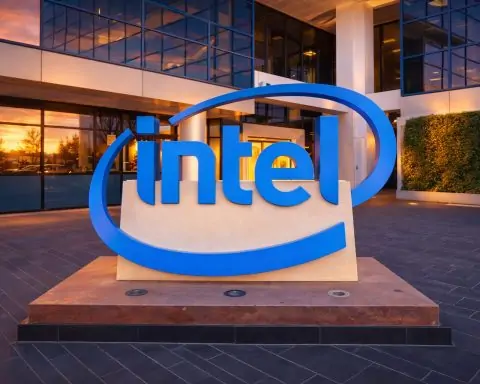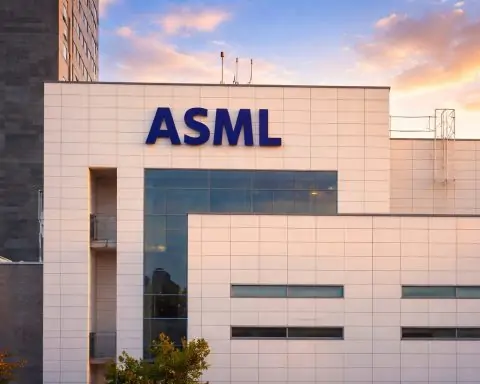- The Gambia has used the ACE submarine fiber-optic cable since 2011, but a 2022 ACE outage knocked the country offline for over eight hours and backup links via Senegal failed, prompting plans for a second submarine cable landing in Banjul under the World Bank-funded Western Africa Regional Digital Integration Program (WARDIP).
- Gamtel launched the National Broadband Network (NBN) backbone in 2019 with Huawei’s support to extend high-speed links across the country.
- An Internet Exchange Point (IXP) was established in 2014 to localize Gambian internet traffic, though its impact has been muted so far.
- QCell launched the country’s first 5G service in June 2023, and Africell followed with 5G in early 2024, with initial deployments limited to select urban areas in Greater Banjul.
- Africell holds about 60–63% of the mobile market, while QCell has about 28–30%.
- Gamtel dominates fixed broadband with about 5,000 subscriptions out of roughly 10,500 total fixed broadband connections in 2020.
- Internet penetration stood at 54.2% of the population at the start of 2024 (about 1.52 million users), but by early 2025 updated estimates put usage at about 45–46% (roughly 1.28 million).
- Starlink negotiations occurred in 2024; as of May 2025 Starlink remained unlicensed in The Gambia, though Starlink had gone live in more than 20 African countries by 2025, with home kits costing about $300–$700 and monthly fees of $30–$50.
- The government has floated “digital village” projects to provide free or low-cost internet access in rural towns.
- In 2024 the Ministry of Communications was renamed the Ministry of Communications and Digital Economy, PURA appointed new Director General Njogu Bah, and a Cybercrime Bill was introduced.
Current State of Internet Infrastructure in The Gambia
The Gambia’s internet infrastructure is a mix of modest fiber-optic backbones, mobile networks, and a single major international cable connection. The country has been connected to the Africa Coast to Europe (ACE) submarine fiber-optic cable since 2011, which provides the bulk of its international bandwidth. However, reliance on a lone undersea cable has proven risky – in 2022, an ACE cable outage knocked the entire country offline for over 8 hours when backup links via Senegal failed [1]. To bolster resilience, a second submarine cable landing in Banjul is in the works under a World Bank-funded regional integration program [2] [3]. Domestically, the state-run Gamtel operates a National Broadband Network (NBN) fiber backbone (launched with Huawei’s support in 2019) to extend high-speed links across the country. This backbone and other terrestrial links have faced frequent cuts and disruptions, often due to road construction and vandalism in the Greater Banjul area [4] [5]. These fiber cuts have not only caused local outages but also increased costs for internet providers that must constantly repair damaged lines [6].
Mobile wireless networks are the primary mode of connectivity for most Gambians. All four mobile operators offer 2G, 3G, and in many areas 4G/LTE coverage [7]. As of 2023, 4G signals reached most of the populated areas, and even 5G technology has begun emerging: QCell launched the country’s first 5G service in June 2023, and Africell followed as the second operator to deploy 5G in early 2024 [8] [9]. These initial 5G networks are live only in select urban locations (greater Banjul and environs) but signal a push toward next-generation mobile broadband. Traditional fixed-line broadband remains limited – Gamtel dominates with a few thousand ADSL/fiber subscriptions (about 5,000 out of ~10,500 total fixed broadband connections in 2020) [10]. An Internet Exchange Point (IXP) was established in 2014 to keep local traffic local and improve speeds [11]. The IXP’s impact has been muted so far (it reportedly “runs slowly” [12]), but it lays groundwork for more robust domestic network routing as the infrastructure matures.
Internet Penetration and Usage
Internet usage in The Gambia has grown rapidly over the past few years, but only about half of the population is online as of mid-decade. At the start of 2024, the country’s internet penetration stood at approximately 54.2% of the population (about 1.52 million users) [13] [14]. By early 2025, updated estimates put internet use around 45–46% (roughly 1.28 million people) [15]. This apparent dip reflects revised data rather than a mass loss of users – in reality, the trend has been a steady climb from just 33% penetration in 2023 [16] to roughly half the population online today. Still, the flip side is that nearly half of Gambians remain offline, concentrated largely in poorer and rural communities.
Crucially, internet access in The Gambia is overwhelmingly mobile-driven. There were about 3.15 million mobile cellular connections active in early 2025, which is 113% of the population (many people have multiple SIM cards) [17]. Mobile broadband subscriptions numbered around 77 per 100 people as of 2022 [18]. Most Gambians who use the internet do so via mobile devices like smartphones [19], taking advantage of expanding 3G/4G networks. In contrast, fixed broadband subscriptions are extremely low – only on the order of ten thousand total nationwide [20] – and are mostly used by businesses, institutions, and urban households that can afford them. This mobile-first usage is also reflected in social media statistics: only about 16% of the population (449,000 users) were on social media in 2025, implying many use the internet for basic messaging and information rather than a wide range of data-heavy services [21].
Demographically, internet use skews toward urban, younger, and more educated segments of the population. The Gambia’s population is about 65% urban as of 2025 [22], and those living in the Greater Banjul Area enjoy far greater internet availability. Meanwhile, rural villagers – often living in dispersed communities upriver – have far lower connectivity due to sparse network coverage and electricity access issues. The country’s youthful age profile (median age ~18.6 years [23]) means that a large cohort of tech-savvy youths are coming online, especially in cities, while older and rural populations lag behind. In sum, The Gambia has made strides in getting people connected (more than doubling internet penetration since 2019), but usage is uneven, with a pronounced urban-rural gap and many citizens still offline.
Key Providers of Internet Services
Despite its small size, The Gambia has a competitive telecom market with multiple service providers, though a few players dominate. The mobile sector is served by four GSM operators:
- Africell Gambia – the largest mobile network operator, which by the latest estimates controls about 60–63% of the mobile market [24] [25]. Africell has been in The Gambia since 2001 and built a reputation for wide coverage and affordable plans, making it the go-to provider for a majority of subscribers. In 2023, Africell leveraged its regional experience to roll out 5G in urban areas, reinforcing its market lead [26].
- QCell – the second-largest operator (estimated ~28–30% market share) [27]. Launched in 2009 as a homegrown company, QCell aggressively competed on data services and was actually the first to launch 4G LTE and 5G in The Gambia [28]. QCell has a strong subscriber base in urban centers and continues to challenge Africell on network quality and innovation.
- Gamcel – a smaller mobile provider which is the mobile division of state-owned Gamtel. Gamcel’s market share is only around 5% as of 2020 [29]. It has struggled to compete with the private operators, though it maintains a presence and caters to some government and rural users. Gamcel offers 2G/3G and some 4G, but its network and customer base are limited.
- Comium – a privately owned operator that once had a significant presence but fell into financial trouble. Comium’s license was briefly suspended in 2021 over unpaid fees [30] [31]. After restructuring (with reported foreign investment) and settling debts, Comium resumed services and has been trying to claw back market share. By some accounts, Comium’s subscriber base rebounded to approach 20–30% of the market in recent years [32], though official 2020 data still showed only ~5% share [33]. Comium’s future will depend on its ability to invest in network upgrades and compete with the bigger players.
A fifth mobile license was issued in 2022 to a new entrant, Giraffe Telecom [34]. However, as of 2024–2025, Giraffe had yet to launch commercial services, and details on its plans remain scarce. If Giraffe begins operations, it could inject fresh competition, but breaking into a small market against established rivals will be challenging.
On the fixed internet and broadband ISP side, the landscape includes:
- Gamtel – the government-owned telecom company, which operates the fixed-line telephone network and DSL/fiber broadband. Gamtel still dominates fixed broadband, accounting for roughly half of all wired internet subscriptions [35]. It also provides wholesale bandwidth to other ISPs via the ACE cable gateway.
- Netpage – a private ISP known for providing WiMAX and fiber broadband in the Greater Banjul area. Netpage offers wireless broadband to homes and businesses and is among the larger ISPs (aside from the mobile companies themselves) [36] [37].
- Unique Solutions, Inet (Insist Global), and DK Telecom – these are smaller ISPs/tech companies that offer various services including enterprise broadband, VSAT links, and IT solutions [38] [39]. Their customer bases are relatively niche (corporate clients, NGOs, etc.), and they often lease capacity from Gamtel or buy international bandwidth indirectly.
- QCell and Africell – in addition to mobile, the two big GSM operators also offer fixed wireless broadband and fiber-to-the-home in select areas. For example, QCell has a product called QONET for home broadband, and Africell also provides home internet in Greater Banjul. Their foray into ISP services means they compete with Gamtel on the broadband front as well [40] [41].
- Comium – historically offered some fixed wireless internet too, though its focus is mobile.
- Others: A few companies specialize in VSAT satellite internet for enterprise and remote connectivity (e.g. GlobalTT, BusinessCom, Vizocom) [42] [43]. These aren’t mass-market ISPs but provide satellite broadband links to banks, government offices, or NGOs in areas where terrestrial internet is unavailable.
In summary, Africell and QCell lead the consumer market, particularly for mobile internet, while Gamtel and a handful of ISPs provide additional options for broadband. The government, through Gamtel, still controls critical infrastructure (the ACE cable landing, national fiber), but privatization and liberalization over the past decade have opened most segments to competition. Market concentration remains an issue – Africell alone carries well over half of all mobile traffic [44] – yet the presence of multiple operators has driven down prices and improved services compared to the monopoly days. Looking ahead, new entrants (like Giraffe) or technologies (like satellite ISPs) could further shake up the provider landscape if they manage to establish themselves.
The Role of Satellite Internet in The Gambia
Satellite internet is poised to play an increasingly important role in The Gambia’s connectivity landscape, especially for reaching underserved regions. Historically, satellite internet usage in the country has been limited. A small number of businesses, government agencies, and NGOs have used VSAT (very small aperture terminal) connections to link remote outposts or as backup links during terrestrial outages. These conventional satellite services (often on C-band or Ku-band satellites) are expensive and low-bandwidth, so they haven’t been adopted by the general public. Instead, they serve niche needs – for instance, a rural bank branch or a community telecenter might have a VSAT if no mobile coverage is available. For most Gambians, though, satellite internet has been out of reach both financially and technologically.
This picture is beginning to change with the advent of low-earth orbit (LEO) satellite broadband, particularly Starlink by SpaceX. Starlink’s constellation of thousands of LEO satellites promises high-speed, low-latency internet even in areas with no ground infrastructure. Starlink is not yet officially available in The Gambia, but it is on the horizon. In mid-2024, the Gambian government entered discussions with Starlink: the Foreign Minister held a virtual meeting with Elon Musk to explore launching Starlink services and “bridging the digital divide” in the country [45] [46]. Starlink executives met with the national regulator (PURA) and other officials in July 2024 to hash out licensing and technical issues [47] [48]. Gambian leaders have expressed optimism that satellite internet could connect schools, health centers, and rural communities with quality broadband where land-based networks are lacking [49]. As of May 2025, however, Starlink remained unlicensed in The Gambia – regulatory approval has been slow, reportedly involving detailed negotiations and even diplomatic pressure from the U.S. government [50] [51]. The delay underscores that while the technology is ready, the policy framework needs to catch up.
If and when Starlink (or similar LEO satellite services) goes live in The Gambia, it could be a game-changer for connectivity. Coverage would no longer be an issue – Starlink’s satellites blanket the globe, so every corner of the country from the city to the remotest village along the River Gambia could receive a signal. This is particularly valuable for a nation with dispersed rural settlements and some riverine islands where laying fiber or building cell towers is cost-prohibitive. Usage scenarios could include connecting rural schools to enable e-learning, powering community Wi-Fi hotspots in villages, or giving farmers and traders internet access for the first time. Even in urban areas, satellite broadband can provide redundancy (for example, businesses could have a Starlink dish as a backup to avoid downtime during terrestrial outages).
However, there are significant caveats around satellite internet, chiefly cost. Starlink equipment and fees, as observed in other African markets, are pricey relative to local incomes. A standard Starlink home kit in Africa costs on the order of $300–$700 for the dish, plus about $30–$50 per month in subscription fees [52] [53]. In The Gambia, where a large portion of the population lives on only a few dollars a day, such costs mean Starlink would be affordable mainly to businesses, organizations, and wealthier individuals. The government might seek ways to subsidize or strategically deploy satellite links (for example, at government digital centers or schools) to spread the benefit. Additionally, while Starlink’s low orbits reduce latency dramatically compared to old satellites, it still may not match the latency of a local fiber network – for applications like high-frequency trading or certain real-time services, fiber remains superior (though those are not common needs in Gambia’s context).
It’s also worth noting there are other satellite initiatives beyond Starlink. For instance, Eutelsat’s Konnect satellite has been offering Ka-band broadband in West Africa, and could technically serve The Gambia with up to 50–100 Mbps service in rural areas [54]. Companies like OneWeb are also launching satellite constellations that might cover Africa in the near future. So The Gambia might see multiple satellite broadband providers vying for licenses in coming years. For now, all eyes are on Starlink as the likely first mover. The U.S. has even framed Starlink’s entry as part of its Digital Transformation with Africa initiative – a program to improve internet access across the continent – underscoring the strategic importance attributed to connecting countries like The Gambia [55] [56]. If regulatory hurdles are cleared, satellite internet could quickly go from virtually nonexistent to an important pillar of The Gambia’s internet ecosystem, complementing the terrestrial mobile and fiber networks and pushing connectivity into the nation’s hardest-to-reach corners.
Government Initiatives and Policies to Expand Internet Access
The Gambian government recognizes that improving internet access is key to the country’s development, and it has rolled out several initiatives and policies in recent years aimed at expanding and modernizing the nation’s connectivity. Major government-led efforts include:
- National Broadband Network (NBN) Project (2019) – In partnership with Huawei, the state operator Gamtel launched the NBN initiative to lay fiber-optic backbone infrastructure across The Gambia. This project’s goal is to increase broadband capacity and extend high-speed connectivity beyond the capital region, creating a nationwide fiber grid linking key towns and institutions.
- National Broadband Policy 2020–2024 – Adopted in 2020, this policy set ambitious targets for universal internet coverage. It envisioned “almost 100 percent” of Gambian households having affordable high-speed internet by 2024. The policy outlined strategies for infrastructure sharing, last-mile connectivity, and incentivizing private investment to achieve near-ubiquitous access, though reaching the 100% target has proven challenging.
- ICT for Development (ICT4D) Policy 2018–2028 – A long-term strategic framework validated in 2020, aiming to bolster the overall ICT sector and digital economy [57]. Key pillars include increasing internet penetration, improving e-government services, building local ICT skills, and creating an enabling environment for tech entrepreneurship by 2028. The ICT4D strategy aligns with broader national development goals and has received support from international partners (including EU funding) [58].
- Western Africa Regional Digital Integration Program (WARDIP) – Launched in 2023 with World Bank financing, WARDIP is a multi-country program (for The Gambia, Guinea, and Mauritania) to improve broadband infrastructure and digital services [59]. For The Gambia specifically, WARDIP is funding the deployment of a new submarine fiber-optic cable and a landing station in Banjul [60]. This second international connection will supplement the ACE cable, improving redundancy and international bandwidth – a critical upgrade to support future internet growth.
- Internet Exchange Point (IXP) and Data Hub – The government established The Gambia’s first IXP in 2014 to localize internet traffic and reduce dependence on foreign hubs [61]. While the IXP’s performance has been limited, the concept remains part of policy efforts to keep Gambian internet traffic domestic for efficiency and security. Additionally, by 2025 The Gambia had one certified data center in operation [62], and policies encourage development of more local data hosting to spur content creation and reduce latency.
- Regulatory Reforms and Infrastructure Sharing – The Public Utilities Regulatory Authority (PURA) has been reviewing regulations to lower barriers for network expansion. In September 2023, PURA launched a public consultation on infrastructure-sharing rules – aiming to force or incentivize telecom operators to share towers, fiber ducts, and other facilities, especially to extend coverage in underserved areas cost-effectively [63]. Streamlining rights-of-way for laying fiber and standardizing fees are also parts of this effort. The government has indicated that such measures are meant to accelerate broadband rollout and address the rural-urban access gap [64].
- Universal Service Fund & A4AI Partnership – To tackle access gaps, Gambia has a universal service fund mechanism (drawn from levies on operators) and in June 2022 it signed an MoU with the Alliance for Affordable Internet (A4AI) [65]. Under this partnership, stakeholders from all ICT sectors convene to update the universal access strategy, focusing on rural connectivity, affordability, and inclusion of marginalized groups [66] [67]. The aim is to align national programs with regional best practices (e.g. ECOWAS Universal Service guidelines) and ensure that funds and policies truly reach the unconnected communities. This collaboration underscores the government’s commitment to “affordable and meaningful connectivity for all Gambians” [68].
- Digital TV and Spectrum Policy – Another policy move with indirect impact on internet access is the Digital Terrestrial Television (DTT) migration. The government launched the first phase of DTT infrastructure in 2020 to switch over from analog TV broadcasting [69]. Once analog TV is fully switched off (a process still incomplete as of 2024 [70]), valuable spectrum in the 700 MHz band will be freed up for mobile broadband (4G/5G) services. This “digital dividend” spectrum has excellent range and penetration characteristics, which could dramatically improve rural wireless broadband coverage. The DTT project, therefore, is seen as a catalyst for expanding internet to remote areas via mobile networks in the near future [71].
Through these initiatives and policies, the Gambian government has signaled a clear priority: expanding internet access is high on the national agenda. President Adama Barrow’s administration has generally been more open and pro-ICT than the previous regime, and while progress has sometimes been slow or below targets, there is ongoing momentum. International partners (World Bank, EU, ITU, A4AI, China’s Huawei, etc.) are actively involved, reflecting a broad support for Gambia’s digital development. The coming years will test how well these plans translate into tangible improvements on the ground – connecting that remaining offline half of the population and boosting quality for those already online.
Affordability and the Digital Divide
One of the biggest challenges in The Gambia’s internet landscape is affordability. The cost of internet service relative to incomes is among the highest in the world, which has resulted in a pronounced digital divide between those who can afford to connect and those who cannot. More than 53% of Gambians live below the poverty line (as of 2020) [72], and high unemployment further limits disposable income. For these citizens, internet access is often a luxury. In fact, a 2022 analysis by the ITU found that even a basic mobile broadband package in The Gambia cost about 11.6% of per capita GNI – far above the 2% of income benchmark for affordability [73]. By comparison, the Africa region average was around 3-4% of income for 1GB of data, meaning Gambia’s poorest pay a significantly larger share of their income to get online.
Prices from local telecom operators illustrate the issue. Data is generally sold in capped bundles, and pay-as-you-go mobile data is expensive in small increments. For example, 8 Gambian dalasi (about $0.15) buys just 20 MB of data, while 1,620 GMD (~$24) buys a 13 GB bundle [74]. An average Gambian making only a few dollars a day cannot afford large data packages, so many resort to tiny top-ups just to use messaging apps or Facebook for a short time. Unlimited broadband packages are virtually nonexistent or extremely costly. As a result, internet use for the lower-income majority is constrained – people might only use free basics or rely on public Wi-Fi where available. High taxes on telecom services and equipment contribute to these steep prices. The government in 2019 introduced new levies on mobile operators (a “GSM operator tax” and other fees) which, although intended to raise revenue for development, ultimately get passed to consumers and make services less affordable [75]. The combination of high operating costs (bandwidth, infrastructure) and a relatively small market has kept tariffs high.
This unaffordability feeds directly into a digital divide along economic and geographic lines. Urban residents of Banjul and Serekunda, who are more likely to have jobs or higher incomes, enjoy far greater internet access than rural villagers in provinces like Upper River or Central River Region. Poverty is much more severe in rural Gambia – about 76% of rural residents were in poverty, compared to 34% in urban areas [76] – and this correlates with low internet uptake outside the city [77]. Even where mobile network coverage technically exists in rural areas, many villagers can’t afford smartphones or the data plans to use them meaningfully. There’s also a gender gap nationally: while precise data is scarce, men generally have higher internet usage rates than women, partly due to income disparities and social factors. The government’s own data show that rural areas suffer from poor infrastructure, lack of electricity, and frequent power cuts, which further hinder connectivity even if telecom service is available [78]. Simply put, it’s expensive to build and maintain networks in sparsely populated areas, and the low incomes there mean those costs can’t be recovered easily – a classic market failure that leaves rural communities disconnected unless public subsidies intervene.
Addressing these divides has become a policy focus. The Alliance for Affordable Internet (A4AI) partnership in 2022 is one effort in that direction – through this, The Gambia is reviewing its universal service policies and strategies to drive costs down [79] [80]. Ideas include infrastructure sharing (so companies don’t duplicate investments needlessly), community networks, subsidies for rural tower deployment, and reducing sector taxes or import duties on telecom equipment. The A4AI coalition is also looking at ways to mainstream gender equality in digital access, ensuring that women and disadvantaged groups are targeted in connectivity programs [81]. Additionally, the government has floated the concept of special “digital village” projects, where public Wi-Fi hotspots or telecenters in rural towns would provide free or low-cost internet access to the local population. Some of this was tried in the past with mixed results (e.g., Gamtel ran telecenters that later struggled due to funding cuts [82]), but the need is prompting renewed attention.
Ultimately, bridging the affordability gap in The Gambia will likely require a combination of market competition and smart subsidies/regulations. Encouraging more providers (like the entry of Starlink or a new mobile operator) could drive prices down through competition, but given the small market, the government will also need to intervene – for example, using the Universal Service Fund to underwrite rural network expansion or free community Wi-Fi, and continuing to pressure providers to offer “lifeline” packages (small daily or weekly plans) at very low cost. Without such measures, the risk is that urban, well-off Gambians march ahead into the digital economy while rural and poor citizens are left behind with only second-hand access. The stakes are high because internet access is increasingly linked to education, economic opportunity, and social inclusion. The Gambian authorities and civil society are keenly aware of this, hence the frequent rhetoric about “closing the digital divide” as a national priority [83] [84].
Challenges Facing Internet Expansion
Expanding internet access in The Gambia comes with a host of challenges – infrastructural, geographic, and regulatory. Overcoming these hurdles is critical to realize the country’s connectivity goals.
Infrastructure Limitations: With only one active international cable for most of the past decade, The Gambia’s internet has been vulnerable. The ACE submarine cable has suffered outages (due to maintenance or faults) that immediately translate into nationwide slowdowns or blackouts [85]. While a second cable is planned, until it materializes the country remains at risk of major disruptions. On the domestic front, the fiber backbone is not yet fully nationwide – many regions still rely on microwave links or older tech for backhaul. The fiber that does exist has proven fragile: in the past few years there were at least eight to ten incidents of major fiber cuts that knocked out connectivity in various areas [86] [87]. Causes ranged from road construction crews accidentally severing cables to deliberate vandalism, and each incident could take hours or days to fix. These frequent outages undermine user trust and impose extra costs on ISPs (who must repair networks and often compensate customers) [88]. Additionally, last-mile infrastructure is lacking in much of the country – outside greater Banjul, there are relatively few cell towers and almost no fiber-to-the-home. Extending coverage to rural villages means tackling low population density and difficult logistics (the river and creeks can make some areas hard to reach with terrestrial lines). Power supply is another infrastructural headache: electricity blackouts are common, and many cell sites or ISPs’ equipment rely on generators. In rural areas with no grid power, telecom towers must run on solar or generator, raising operating costs and sometimes causing network downtime when fuel runs out [89].
Geographic and Demographic Challenges: The Gambia’s geography is unique – a narrow strip of land bisected by the Gambia River. While the terrain is generally flat (so physical geography isn’t as challenging as mountains or deserts), the linear shape of the country means infrastructure must extend eastwards from the coast in a long line. Communities along the riverbanks can be isolated. Laying fiber or building roads to far-flung villages requires crossing the river at limited bridge/ferry points. The population is also quite small (under 3 million) and spread out, so the economies of scale for big infrastructure projects are poor. Rural cell towers might cover only a few hundred users, making it hard for private operators to justify investment without subsidies. The rural population’s low literacy and digital skills pose another challenge – even if internet becomes available, there is a need for digital literacy programs so that people can make meaningful use of connectivity (for education, agriculture, health, etc.). The government and NGOs have to complement pure infrastructure rollout with training and local content initiatives to truly integrate rural communities into the internet age.
Regulatory and Political Issues: Under the former Jammeh regime, Gambia’s telecom sector was tightly controlled, and while things have liberalized since 2017, some regulatory obstacles persist. PURA, the regulator, is not fully independent – its leadership is appointed by the President and it has traditionally been more of an advisory body [90] [91]. This has sometimes led to slow or politicized decision-making. Licensing new services can be cumbersome; for example, it took considerable time to process the license for the new operator (Giraffe) and to engage with Starlink’s application. As of 2025, Starlink’s licensing was still pending amid inter-ministerial wrangling [92] [93]. Some in government raised concerns about how to regulate satellite broadband and its impact on local ISPs, leading to cautious, slow approval. Such delays mean the country isn’t always quick to benefit from new technologies. Moreover, past incidents show regulatory hiccups: in 2018 the ministry imposed a moratorium on new fiber builds (reportedly to control chaotic digging) which unfortunately slowed broadband expansion until it was lifted [94]. Coordination between agencies can be a challenge too – telecom involves PURA, the ICT Ministry (now Ministry of Communications and Digital Economy), and sometimes other bodies like the Finance Ministry (for taxes) or local governments (for permits). Streamlining these processes is still a work in progress.
The business environment in Gambia also presents challenges for internet growth. ISPs and telecom companies have cited bureaucratic inefficiencies and occasional favoritism in getting approvals or access to resources [95]. For example, smaller ISPs in the past struggled to get fair wholesale access to the ACE cable bandwidth, as Gamtel controlled the gateway and could set high prices [96]. PURA intervened with a pricing model to open up the gateway, but some small providers still report difficulties obtaining capacity [97]. Competitive practices are improving, but monopolistic tendencies linger in critical infrastructure. Additionally, taxation on the sector is high: beyond the consumer-end taxes, import duties on telecom equipment and fees on operators increase the cost of network deployment [98] [99]. Operators pass these costs onto users or delay network upgrades. High operating costs also discourage expansion into less profitable rural areas, perpetuating the access gap.
Lastly, external factors can’t be ignored. The Gambia is a least-developed country and heavily donor-dependent. Economic shocks – such as the COVID-19 pandemic or global inflation – hit consumers’ ability to pay for services and the government’s ability to fund projects. The pandemic, for instance, highlighted the importance of internet (for remote learning, etc.) but also strained the sector with increased demand despite limited infrastructure. In such times, maintaining and expanding service quality is challenging.
In summary, the road to a fully connected Gambia runs through solutions to these issues: building redundancy and robustness in infrastructure (e.g. completing the second international cable, securing fiber routes against cuts), incentivizing rural buildout (perhaps via subsidies or public-private partnerships), making regulatory processes agile and fair, and driving down costs so that internet access is not a luxury. The challenges are significant, but not insurmountable – especially with the political will that has been gathering in recent years around ICT development.
Recent Developments and Trends (2024–2025)
The period 2024–2025 has been an eventful one for The Gambia’s internet sector, marked by technological upgrades and high-profile efforts to boost connectivity:
- 5G Rollout: The Gambia leapt into the 5G era, joining the ranks of countries with next-generation mobile service. QCell’s launch of a commercial 5G network in June 2023 made headlines as the first in the country [100]. Africell followed suit in early 2024, turning on 5G in parts of Banjul and surrounding areas [101]. While coverage is currently limited to a few hotspots (e.g. downtown Banjul, Serrekunda, and the airport area), these deployments signal a broader trend of network modernization. The availability of 5G is expected to grow slowly as operators invest, with a focus on urban demand. Even so, it is a significant step; ultra-broadband wireless can enable new services (like advanced broadband for businesses, smart city applications, HD streaming) and demonstrates that Gambia’s telecom sector is keeping up with global tech trends.
- Satellite Internet on the Horizon: As detailed earlier, 2024 saw vigorous movement toward introducing Starlink satellite broadband in The Gambia. The high-level meetings between government officials and SpaceX leadership, and the U.S. diplomatic push to expedite Starlink’s license, were notable developments [102] [103]. Although final approval was still pending in 2025, there is a palpable sense that satellite internet is coming soon. Indeed, Starlink has already gone live in over 20 African countries by 2025 [104], and The Gambia is likely to join that list once regulatory kinks are ironed out. This impending launch is a trend to watch – we can expect pilot programs or community demos once Starlink is authorized, potentially followed by commercial availability (dishes for sale, etc.) for those who can afford it. How the market reacts – will many households sign up, or will it be mostly NGOs and businesses? – is an open question, but the mere availability of satellite broadband will be a sea change from the status quo of reliance on land networks.
- New Submarine Cable and Regional Integration: In April 2024, it was confirmed that The Gambia (along with Guinea) plans to install a new submarine fiber cable to diversify its international connectivity [105] [106]. This is part of the WARDIP project mentioned above. During 2024–25, groundwork for this has been underway: choosing cable routes, building a landing station, etc. Once completed (expected in a couple of years), this development will significantly increase bandwidth and reduce the chances of total internet blackout from a single cable cut. It’s a critical trend because it will underpin all other improvements – more capacity and resiliency at the core of the network.
- Policy and Regulatory Changes: The government in 2024 continued to refine the policy environment for ICT. The Ministry of Communications was rebranded and given an expanded mandate (now the Ministry of Communications and Digital Economy), reflecting a push towards digital services and tech startups. PURA got a new Director General in March 2024, Njogu Bah, which attracted some controversy given his past in the former regime [107] [108]. Observers are watching to see if PURA under new leadership will take a more proactive stance on issues like price regulation and consumer protection. Also, in late 2023 and 2024, PURA’s consultations on infrastructure sharing and quality of service standards have indicated a trend toward tighter regulation to improve service and lower costs [109]. On the legislative side, a Cybercrime Bill introduced in 2024 (though focused on content and security) shows the government’s increasing attention to the digital domain as internet usage grows [110]. Ensuring a secure and open internet goes hand in hand with expanding access.
- Digital Services Uptake: A softer trend is the uptake of digital services which drive demand for better internet. 2024–25 saw growth in e-commerce platforms, more government services going online (e.g. some permit applications, tax filings), and a rise in content creation by young Gambians on YouTube and TikTok. The number of social media users, while only 16% of the population, is growing annually [111]. There’s anecdotal evidence of more rural folks using mobile money apps and WhatsApp for business when they do get connectivity. All of this increases the pressure on networks – a positive pressure that spurs investment. Internationally, Gambia’s participation in initiatives like the Digital Transformation with Africa (DTA) means it could receive support for projects such as expanding rural internet or digital literacy programs [112]. The recognition of digital development as a key part of the national agenda (even in the National Development Plan 2023–2027) is a noteworthy shift.
Outlook: The recent developments paint a picture of a country on the cusp of a connectivity breakthrough. The combination of new infrastructure (5G, a second cable), potential new services (Starlink), and committed policy reforms could dramatically improve internet access in the next few years. If 2020–2022 were about planning and policy, 2024–2025 is about implementation and new technology rollout. Challenges like cost and rural access remain, but there is momentum and optimism that The Gambia can leapfrog some legacy constraints. The world will be watching this small West African nation to see if it can transform from having patchy, expensive internet into a success story of affordable, widespread connectivity. The pieces are falling into place – and as they do, millions of Gambians stand to benefit from the educational, economic, and social opportunities that come with being truly connected to the global digital community.
Sources: [113] [114] [115] [116] [117] [118] [119] [120] [121] [122], [123] [124] [125], [126] [127], [128] [129] [130] [131].
References
1. www.ecoi.net, 2. freedomhouse.org, 3. freedomhouse.org, 4. www.ecoi.net, 5. www.ecoi.net, 6. freedomhouse.org, 7. freedomhouse.org, 8. extensia.tech, 9. extensia.tech, 10. freedomhouse.org, 11. freedomhouse.org, 12. freedomhouse.org, 13. freedomhouse.org, 14. datareportal.com, 15. datareportal.com, 16. www.ecoi.net, 17. datareportal.com, 18. freedomhouse.org, 19. freedomhouse.org, 20. freedomhouse.org, 21. datareportal.com, 22. datareportal.com, 23. datareportal.com, 24. www.ecoi.net, 25. extensia.tech, 26. extensia.tech, 27. freedomhouse.org, 28. extensia.tech, 29. freedomhouse.org, 30. www.ecoi.net, 31. www.ecoi.net, 32. pulse.internetsociety.org, 33. freedomhouse.org, 34. freedomhouse.org, 35. freedomhouse.org, 36. www.ecoi.net, 37. www.ecoi.net, 38. www.gbosdata.org, 39. www.gbosdata.org, 40. freedomhouse.org, 41. freedomhouse.org, 42. www.satsig.net, 43. vizocom.com, 44. extensia.tech, 45. foroyaa.net, 46. foroyaa.net, 47. foroyaa.net, 48. foroyaa.net, 49. foroyaa.net, 50. africa.businessinsider.com, 51. africa.businessinsider.com, 52. techcabal.com, 53. techcabal.com, 54. africa.konnect.com, 55. africa.businessinsider.com, 56. africa.businessinsider.com, 57. freedomhouse.org, 58. freedomhouse.org, 59. freedomhouse.org, 60. freedomhouse.org, 61. freedomhouse.org, 62. pulse.internetsociety.org, 63. freedomhouse.org, 64. freedomhouse.org, 65. a4ai.org, 66. a4ai.org, 67. a4ai.org, 68. a4ai.org, 69. freedomhouse.org, 70. freedomhouse.org, 71. freedomhouse.org, 72. freedomhouse.org, 73. freedomhouse.org, 74. freedomhouse.org, 75. freedomhouse.org, 76. freedomhouse.org, 77. freedomhouse.org, 78. freedomhouse.org, 79. a4ai.org, 80. a4ai.org, 81. a4ai.org, 82. www.ecoi.net, 83. freedomhouse.org, 84. freedomhouse.org, 85. www.ecoi.net, 86. freedomhouse.org, 87. www.ecoi.net, 88. www.ecoi.net, 89. freedomhouse.org, 90. www.ecoi.net, 91. freedomhouse.org, 92. africa.businessinsider.com, 93. africa.businessinsider.com, 94. freedomhouse.org, 95. www.ecoi.net, 96. www.ecoi.net, 97. www.ecoi.net, 98. freedomhouse.org, 99. freedomhouse.org, 100. extensia.tech, 101. extensia.tech, 102. foroyaa.net, 103. africa.businessinsider.com, 104. africa.businessinsider.com, 105. freedomhouse.org, 106. freedomhouse.org, 107. freedomhouse.org, 108. freedomhouse.org, 109. freedomhouse.org, 110. freedomhouse.org, 111. datareportal.com, 112. africa.businessinsider.com, 113. freedomhouse.org, 114. datareportal.com, 115. datareportal.com, 116. extensia.tech, 117. africa.businessinsider.com, 118. freedomhouse.org, 119. freedomhouse.org, 120. freedomhouse.org, 121. freedomhouse.org, 122. foroyaa.net, 123. foroyaa.net, 124. a4ai.org, 125. a4ai.org, 126. www.ecoi.net, 127. www.ecoi.net, 128. freedomhouse.org, 129. extensia.tech, 130. freedomhouse.org, 131. africa.businessinsider.com
